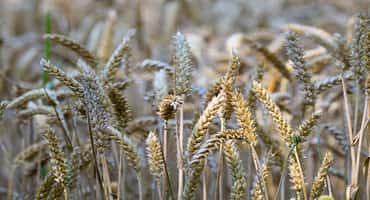Soybean prices could rise above $10.50 per bushel
By Diego Flammini
Staff Writer
Farms.com
The USDA’s May World Agricultural Supply and Demand Estimates (WASDE) report provided grain farmers with some good news.
USDA projects 2018-19 soybean ending stocks to be about 415 million bushels, down from 530 million bushels in 2017-18. Despite current trade issues with China, farmers could receive between US$10.50 and US$10.60 per bushel, said Moe Agostino, chief commodity strategist with Farms.com.
“China still has to buy big chunks of soybeans from the U.S.,” Agostino told Farms.com yesterday “They typically buy about 46 million metric tons (annually) and they’ll still have to buy about 39 or 40 million metric tons. Argentina’s crop isn’t there and Brazil can’t provide it to them.”
If wet weather in the coming weeks delays soybean planting, growers could receive a price premium, Agostino said.
Corn growers also received good news in May’s WASDE.
Corn ending stocks for 2018-19 is about 1.682 billion bushels, USDA says. That’s down from 2.182 billion bushels in 2017-18.

The USDA’s average yield projection for 2018 is 174 bushels per acre, the WASDE said. If that number drops slightly, corn producers could be rewarded when it’s time to market their crops, Agostino said.
“If the yield drops to even 170 (bu/ac), with 88 million (planted acres), we’ll see US$4.50 or US$5.00 corn,” he said. “But at this point it’s too early to really predict yield and a lot of it will come down to weather.”
President Trump’s recent announcement to allow year-round sales of E15 could also be beneficial for corn producers. But growers may not see the benefits of that ruling for four or five years, Agostino said.
The report proved a little less kind to wheat producers, however.
The USDA projected ending stocks at 955 million bushels, lower than the 1.07 billion bushels in 2017-18. It projected wheat exports at 925 million bushels, up from 910 million in 2017-18.
Despite those favorable numbers, wheat producers may need to wait a little longer to see any kind of price increase.

“The export numbers aren’t enough, and I think some numbers need to get smaller,” Agostino said. “We have to get through (winter wheat) harvest, so farmers might have to wait until July or August to see any price movement.”
Agostino projects wheat prices to be between US$6.25 and $7.50 per bushel.
The next WASDE report will be released on June 12.
For exclusive access to Moe Agostino's live monthly WASDE analysis and other risk management services, sign up for a free eight-week trial.